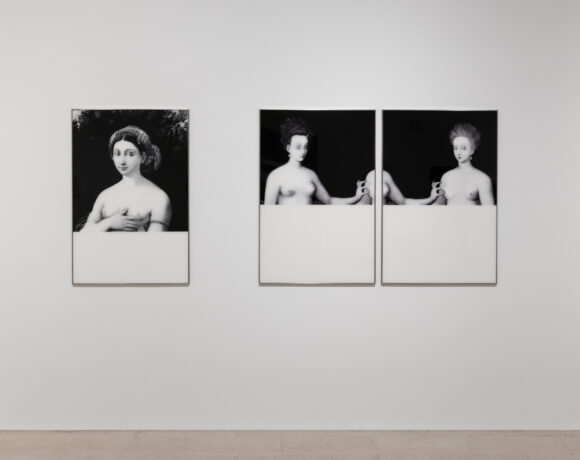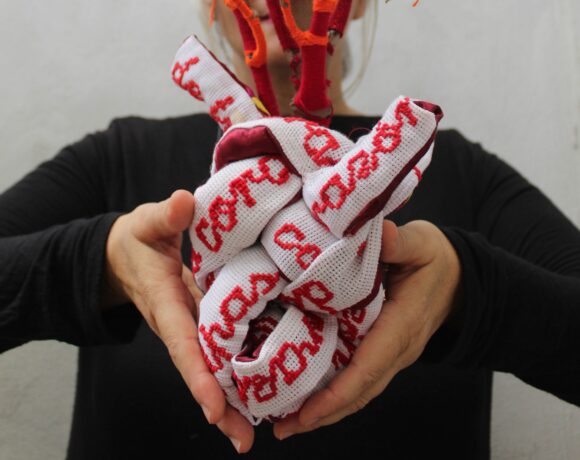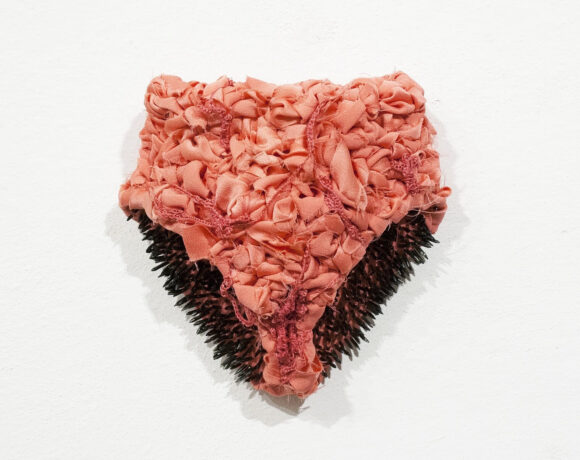What happened to the carnality of bodies in the era of Instagram filters and how is the individual identity in the era of standardized desire? Is there (has ever existed?) a representation of corporeality free from aesthetic, social and cultural standards? These questions are suggested by the exhibition “Fu desiderio che infine prende forma in un corpo“, which can still be visited for a few days in Bologna at Adjacenze, which stages a successful dialogue between two young artists, the painter Adelisa Selimbašić (1996, Malsch Karlsruhe , Germany) and the photographer Sara Lorusso (1995, Bologna), whose respective poetics are united by a similar search for the “truth” of female physicality, which for both is inseparable from the affective, emotional and sensual component.
The setting, which is very scenic especially in the underground space where the life-size pictorial and photographic images seem to float in the dim light, supports the dialogue with combinations that emphasize specificities and differences in the two different approaches, which are mutually enhanced by this synergy. The title of the exhibition, taken from the poem Non sempre ricordano by Patrizia Vicinelli, whose recurring mantra was “life equal artwork”, establishes an inverse parallelism between the poetess and performer’s attitude to incorporate the most self-destructive instances of the lost generation that painfully crossed the slope between the seventies and eighties and the propensity of the two artists to acknowledge this need for incorporation as a constructive opposition to the dominant aesthetic homologation.
Adelisa Selimbašić‘s painting investigates the physical presence of women to restore the detachments from a pre-established cultural canon according to which such specificities, such as scars, stretch marks or other epidermal imperfections, are generally considered defects. The women portrayed by her fight “the illusion of a fixed and determined gender identity, and that of the body as a passive medium marked by it” and become the spokespersons of a struggle for the liberation of all bodies and genders from discrimination that assumes an ethical and counter-cultural value. The protagonists of her paintings are real women whose features are drawn from mental recompositions of photographic images taken by her, or found on the internet, in which the signs of the body and the vagueness of certain details evoke emotions and stories.
Often the faces exceed the pictorial surface or are barely hinted at by summary brushstrokes that sketch more a state of mind than a connotation and also the body is mainly alluded through fragments, which encourage the observer to imagine the whole, intended not in its figurative coherence, but as a symbiotic link between exteriority and intimacy. The fluid, shaded and visionary drafts of color perform the structural function of the drawing and show the artist’s pleasure in detecting the constitutive mutability of an ever-alive and passionate form that is projected into the visual field of the beholder with an almost tactile plasticity.
Sara Lorusso’s photographs, who opens the exhibition path with a crossable curtain-diaphragm on which the iconic kiss of a young couple stands out, carry out an exploration of the most private dimension of the subjects portrayed, in which the desire to show without filters and inhibitions even what is normally considered taboo (such as LGBTQ + love or female sexuality) is combined with an approach of rare delicacy. Even in her case, the representation of the body is strictly connected to the affirmation of an identity which, as such, must never be limited or mortified and therefore must be shown without aesthetic impositions of a cultural nature.
The images on display show homosexual couples, recruited by the artist through a call during the Love is Love project (which debuted in Milan on the occasion of Pride Week 2019), exchanging effusions in the context of their everyday life and details of female bodies whose peculiarities are embellished with overlapping elements, such as lace, flowers or other objects loaded with symbolic value. The suffused atmosphere that envelops fleshes and objects in the same way, unifying their surface texture, seems to erect a protective barrier that prevents the judgmental gaze from penetrating, suggesting that in the intimacy of others one must always look out with respect and discretion. The artist’s loving gaze opens up her subjects as if they were flower petals invigorated by the rain and she manages to bare their deepest selves with disarming sincerity.
Info:
Adelisa Selimbašić and Sara Lorusso. Fu desiderio che infine prende forma in un corpo
22/09-27/10/2022
curated by: Laura Rositani and Adiacenze
Adiacenze
Vicolo Spirito Santo 1/B, Bologna
Opening hours: Tue-Sat, 16.00-20.00 (in the morning by appointment)
www.adiacenze.it
For all the images: Adelisa Selimbašić and Sara Lorusso. Fu desiderio che infine prende forma in un corpo, installation view at Adiacenze, courtesy the artists and Adiacenze





Graduated in art history at DAMS in Bologna, city where she continued to live and work, she specialized in Siena with Enrico Crispolti. Curious and attentive to the becoming of the contemporary, she believes in the power of art to make life more interesting and she loves to explore its latest trends through dialogue with artists, curators and gallery owners. She considers writing a form of reasoning and analysis that reconstructs the connection between the artist’s creative path and the surrounding context.






NO COMMENT